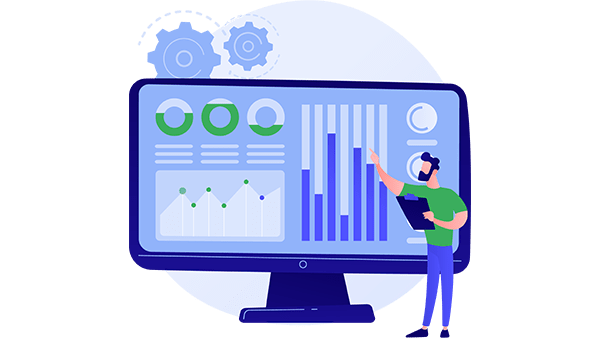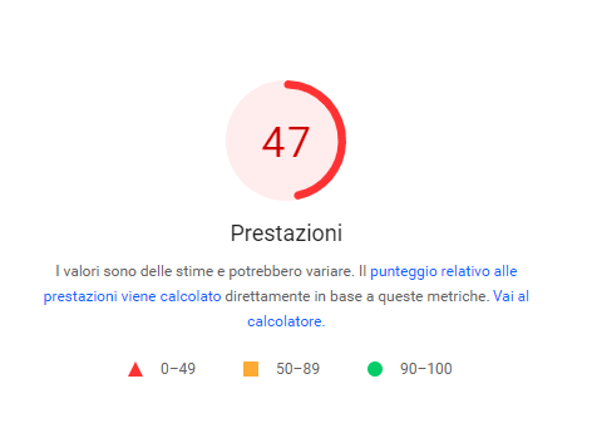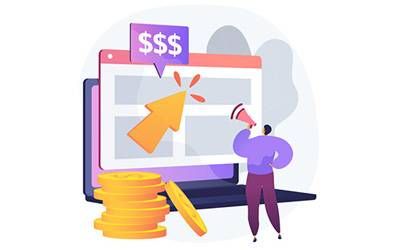CDN and e-commerce: why it is a necessary requirement but not enough to improve performance
More and more frequently when you talk about “Web” you mean “mobile”, and the increasing use of mobiles has accelerated what has always been a primary need for users: browsing quickly, especially when it comes to comparing many different products, as in the case of a purchase. Speed has become the decisive factor, the one capable of shifting the balance between competitors. In this article we will tell you why the CDN has become a necessary but not sufficient competition tool in the e-commerce world.


- CDN for e-commerce: why we can’t do without it anymore
- What is CDN and how it works
- The role of the CDN in e-commerce
- The benefits of CDN for e-commerce: when performance and UX are crucial for Google too
- The benefits of cdn for conversion rate optimization (cro) in the e-commerce sector
- Why CDN is not enough
CDN for e-commerce: why we can’t do without it anymore
Once upon a time it was enough to have a good product and an adequate price to try the climb to success in e-commerce business. Now that is no longer true. Not that quality, product exclusivity or price competitiveness have lost importance; e-commerce is actually no longer a novelty reserved for a few lucky pioneers, but it’s in fact a market that, in over two decades of life, can rightly be said to be mature, with all that it implies.
This implies first of all that the scenario is very crowded and competitive at the highest levels and in all its aspects. But if every online shop, also based on its positioning, can have competitive advantage factors such as price, quality, exclusivity, etc., today a cross-cutting factor has become fundamental regardless of positioning and sector: the quality of user experience. And UX means – not only but above all – speed.

Response time is therefore a crucial element for an e-commerce.
If we consider the large number of elements on a page such as, for example, those showing product lists, the impact of the various elements on the loading times, especially static ones such as images, is really huge. This inevitably affects user experience and therefore conversions.
In short, a fast and fluid e-commerce increases the chances of turning user visits into conversions, which contributes to an increase in turnover.
What is CDN and how it works
CDN is the acronym for Content Delivery Network, a technology that consists of a network of servers located all over the world capable of distributing the content of a site to all clients (visitors) who request them based on their location. The system is in fact inserted between the hosting and the end user, and is able to determine, by caching the content, the geographical origin of the visitor and to pass the data directly from the closest CDN node, with a considerable saving of internet bandwidth and a faster response in total safety. The purpose behind the configuration of a CDN is to reduce the latency and the download speed, that is the time between the forwarding of a request for a static object and the complete download of the object.
The nodes of this network are also called proximity nodes or “edge servers” and represent the meeting point between the physical world and virtual one where an interaction starts around the network perimeter thus created. Thanks to thousands of PoPs around the world, CDNs are able to offer proximity to end users.

The role of the CDN in e-commerce
When it comes to an e-commerce site, the amount of data involved is noteworthy (just think about the number of images or videos of the products) and this has a significant impact on the browsing speed. This is where CDN comes into play and makes a difference, providing higher performance. Each proxy in the delivery chain rewrites the URLs of static objects so that they can be fetched on the CDN domain at the closet node to the client’s request. This translates into a response speed – and therefore browsing speed – significantly higher than a system that does not have CDN.
There are many reasons why it is unthinkable nowadays to do without a CDN if you manage a site with a large number of visits like a big e-commerce. But let’s just focus on the two main reasons:
- The bandwidth saving translates into cost savings that becomes significant on a large scale;
- More than 50% of users abandon the site and move on to the next competitor if they have to wait more than 3 seconds to see the page loaded.
Moreover, in recent years another topic has gained more and more importance for SEO and has become the primary goal of the most recent updates to Google algorithm: the impact of loading speed on positioning in the search engines.

The benefits of CDN for e-commerce: when performance and UX are crucial for Google too
User Experience, a discipline created to investigate and measure the quality of the experience that users make of a service, has been dealing also with the digital field for years. The innovation set to cause a revolution in the SEO field, however, is that today even Google algorithm has begun to evaluate user experience as a ranking factor:
Positioning is no longer just a question of keywords and HTML tags. Today it is also a matter of user experience, and it will be more and more so. User experience for Google means first of all loading speed.

The latest statements by the Mountain View giant company do not leave many doubts as to which direction is taken: the websites that best meet the requirements established by some fundamental metrics, the so-called Web vitals, are preferred.
These metrics measure three fundamental aspects of user experience:
- Loading speed of the most important content on the page
- Time needed to make the first interaction with the page
- Visual layout stability while loading
Google has defined very specific thresholds for experiences that can be defined as good, bad or in need of improvement. In order to have a good:
- LCP, the website must be able to load the largest element of the viewport, that is of the browser window, within 2.5s from the users’ initial request
- FID, the website must be able to respond to the first user input within 100 ms
- CLS, the website must report a score of less than 0.1.
It is easy to understand how in terms not only of User experience but also SEO ranking, it becomes increasingly important to reduce loading times and provide the fastest possible site. In parallel with an optimized design and content, a fast, secure and responsive site ultimately meets the needs of the end user. The scenario that lies ahead when in May 2021 the web vitals will be a decisive factor in Google algorithm is easy to understand, and it recalls an Armageddon.
The advantages of CDN for Conversion Rate Optimization (CRO) in the e-commerce sector
Conversion Rate Optimization is the branch of digital marketing that deals with identifying and applying all the strategies necessary to increase the conversions of a site. There are many strategies that can be applied in the e-commerce field, but the main purpose is always to improve performance and therefore increase the number and value of sales.
The path that an e-commerce user takes before reaching the payment is long and full of pitfalls: from the landing phase to the conversion phase, we move on to comparisons of characteristics between products, the research for detailed information, requests for support… not to mention the most critical phase of the whole process for an online shop: the steps of the shopping cart.
In this narrow conversion funnel, thrilling percentages of potential buyers are lost at every step, and in most cases the fault lies not with the product but with the shopping experience. It goes without saying that loading speed plays a decisive role in the online shopping experience.
If we analyze this aspect on a large scale, that is to say in big e-commerce, improving page loading speed by even a fraction of a second could mean increasing conversions by several percentage points, and this is especially true when users browse from mobile, where connections on average are weaker.
1 second delay in page response can result in a 7% reduction in conversions. (neilpatel.com)
It was said not many years ago on an authoritative portal: today we are talking about percentages that, especially in some sectors – such as luxury goods – far exceed a double-digit rate.

Why the CDN is no longer enough
As we have seen, providing your e-commerce platform with a content distribution system via CDN is now an essential prerequisite. This is however no longer enough to compete at the highest levels.
If a CDN network allows you to distribute content more quickly based on the user’s geolocation, it is possible to push site performance to a further level by optimizing servers and content before it is distributed, with a significant impact on loading times.
Starting from the management of resources at the server level, up to the post-processing of the content to be distributed, it is indeed possible to perform many optimizations. Here are some of the most important:
- Load balancing: intelligent management of traffic loads on different servers
- Smart cache management for static content: standard content caching management
- Compression of HTML/JS/CSS files and images: it helps to reduce the weight of resources
- Minification of JS and CSS resources: compact JS and CSS files by eliminating whitespace for lighter weight and faster loading speed

Most commercial CDNs perform – with the number of features and quality levels varying between the various providers – some of these tasks, granting an improvement in terms of loading speed even in the event of traffic peaks. The first problem, however, is that none of these are capable of performing all of them.
Commercial CDNs are not able to perform some optimizations that allow a site to significantly increase the loading speed and reach the highest levels in Google Page speed. Here are the most important:
- Combination of JS and CSS files into one file: allows you to decrease the requests to the server and thus increase the loading speed
- Smart cache management based on real user usage: is not limited to providing a cached copy of static content but, thanks to the A.I., intelligently manages content caching based on real resource usage
- Management of the loading order of page elements: based on the information obtained from Google Lighthouse
The set of these features, and in particular the latter which is nothing short of revolutionary, is able to push SEO and UX optimization to levels unthinkable until recently, with immediate effects on the conversion rate and on the positioning of the pages.
Last, but certainly not least, the topic of technical SEO optimizations, that is, the code side. Although CDNs do not just distribute content but, as we have seen, perform some basic optimizations, they are not able to manage the semantic SEO aspects – increasingly relevant for Google – in the source code.
These optimizations are usually performed by specialized agencies, with not inconsiderable development and maintenance costs and times.
For all these reasons, Aritmetika offers the iSmartFrame WEB optimization platform which, in addition to performing the functions of an advanced CDN, also integrates a SEO Engine capable of automatically performing over 100 optimization tasks at technical SEO level. This platform allows increased speed and conversions and improved UX and ranking.
That’s why iSmartFrame has become a market standard for the most important big companies and e-commerce at a global level.
iSmartFrame: much more than a CDN. The most advanced SaaS solution for dynamic and continuous optimization of website performance
Insights
News, studies and research on the world of Business Performance. Aimed at managers and staff of companies interested in the growth potential that Digital offers.
User experience: why it is increasingly crucial for the success of an e-commerce
Do you know the first rule for e-commerce? Here it is: “if users can’t find a product, they cannot even buy it”. Full stop. And breaking this simple rule is easy, even without knowing it. You only need an item poorly displayed in the digital showcase, described with insufficient information or hard to reach due to a slow website, to blow up even the most refined branding, marketing and communication strategies.
Conversion rate optimisation (CRO) for ecommerce: the steps to follow
An e-commerce can be called successful if it returns a good proportion between products sold and visits recorded. In this article we will understand how a website can be improved and how to achieve satisfactory results through an effective optimisation strategy.
Making Money? It Only Takes a Tenth of a Second
Here’s why increasing the loading speed of your website even by just a tenth of a second can make a difference of up to 10% when it comes to online sales. Research from business intelligence experts is very clear: user experience on smartphones is worth more than the actual product and brand.
Master Core Web Vitals and boost your business
To configure the platform we need information and technical specifications.
Set a call to learn more



